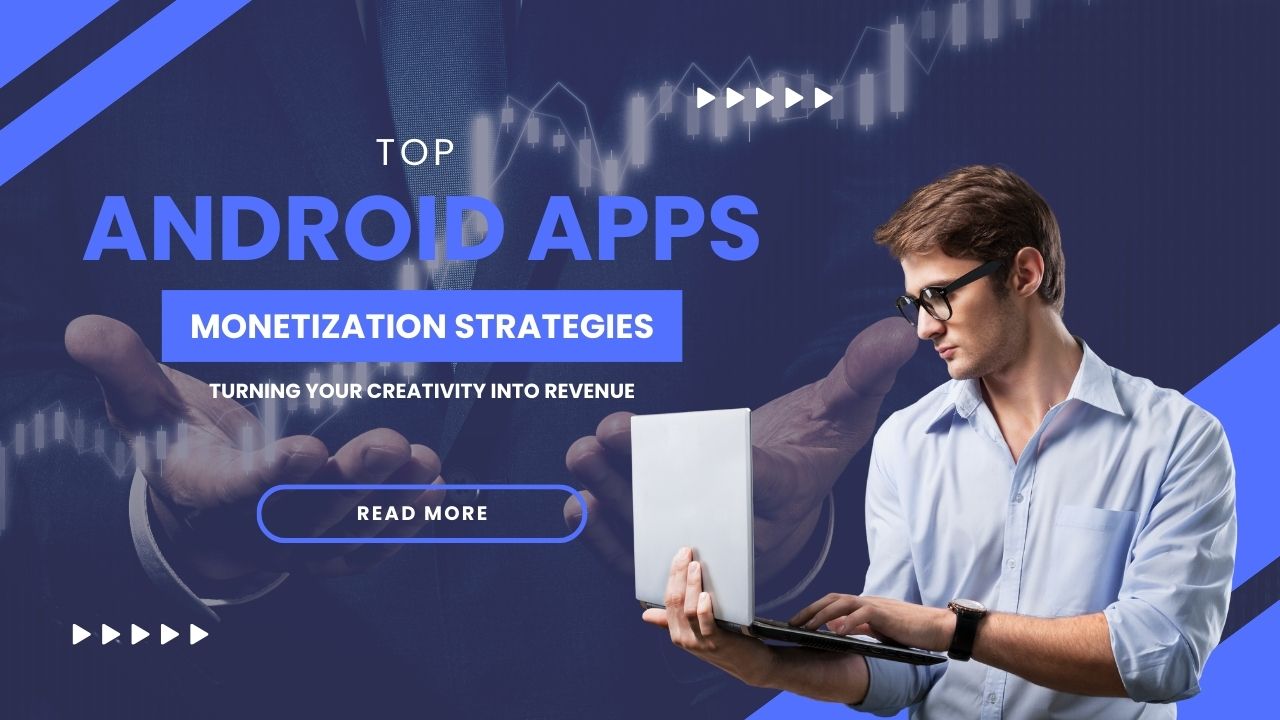Mobile apps are a popular way to consume content, play games, and stay connected with friends and family. In 2022, there were over 218 billion app downloads worldwide, and the market is expected to continue to grow in the coming years. According to a report, Google play store has 3.5 Million mobile apps accessible for the Android users and apple store has 1.6 million apps for iOS users to download. Millions of apps are now available on multiple play stores, making mobile app development an increasingly popular industry. In addition to finding ways to make your Android app valuable and interesting, finding ways to support your efforts and generate revenue is as crucial. In order to assist developers turn their creativity into cash, we will examine numerous monetization strategies for Android apps in this post.

1. In-App Advertising
In-app advertising is one of the most popular ways to monetize android apps. This strategy is putting up ads inside your app and making money from user interactions like clicks or impressions. Several ad forms should be taken into account:
- Banner advertisements: These tiny advertisements are often shown at the top or bottom of an app’s user interface.
- Interstitial ads: Full-screen advertisements that show between changes in an app’s content, as between stages of a game or articles.
- Rewarded advertisements: In exchange for interacting with these ads, users receive benefits like in-app currency or additional lives.
- Native advertisements: Native ads are seamlessly included into the app’s content and match the overall user experience.
- Video ads: Interesting videos that viewers watch for a predetermined amount of time or all the way through.
You can cooperate with ad networks like Google Admob and Facebook Audience Network to implement in-app advertising, or you can incorporate ad mediation systems to display ads from many networks in order to maximize revenue.
2. Freemium Model
The freemium business model enables consumers to download and use the free version of your software while charging for access to more advanced functions or content. This strategy draws a large user base and motivates users to upgrade to receive more perks. To make the freemium model successful:
- Provide Valuable Free Content: Make sure your app’s free version offers customers a lot of value so they’ll be more inclined to consider paying for premium features.
- Create a Clearly Defined Upgrade Path: Make it simple for users to make in-app purchases and make it clear what upgrading will gain them.
- Update and improve the app on a regular basis: To persuade users to upgrade, constantly improve your software and roll out new premium features. Consistently provide new updates and features to users for your app. Hire, the best Android app development service for the future updates of your app.
3. Subscription-Based Services
A subscription-based business strategy can give your Android app a consistent flow of money. Access to premium features, content, or services requires users to pay a monthly price. This approach is best suited for apps that provide continuing value, such news sources, health apps, or productivity tools. When putting subscriptions into place:
- Specify Tiers and Pricing: To appeal to a wider audience, provide various subscription tiers with varied features and prices.
- Offer a Free Trial Period: To promote subscription conversion, give customers a brief opportunity to try out premium services.
- Offer special Content: To encourage recurring subscriptions, give users access to special content or incentives.
4. In-App Purchases
Users can purchase virtual goods, premium content, or currency inside your game through in-app purchases (IAPs). Although this tactic is common in mobile games, it may be applied to many different app categories. IAP success requires:
- Maintain a balance between free and paid content: Ensure that customers may use the app for free while making the premium content alluring enough to entice purchases.
- Implement a Virtual Economy: Build a virtual marketplace within your app where users can exchange real money for virtual goods.
- Use Time-Limited Offers: Occasionally launch time-limited discounts or promotions to increase IAP sales.
5. Sponsorships and Partnerships
Think about collaborating with businesses or brands that fit the target market for your app. Partnerships and sponsorships may involve branded content placement, discount promotions, or joint marketing initiatives. For apps with a defined target demographic, such those for travel, fitness, or lifestyle apps.
6. Affiliate Marketing
Promote goods or services relevant to the audience or content of your app by incorporating affiliate marketing inside it. You receive a commission when customers use your affiliate links to make purchases. For apps with a lot of content, such those in the fashion, technology, or reviews areas, affiliate marketing can be effective.
7. Crowdfunding and Donations
You could want to think about crowdfunding or contribution possibilities if your software offers a niche community or something special. You can directly solicit donations from the users of your app by using websites like Patreon or Kickstarter. To encourage support, provide awards or access to special material.
Conclusion
The specialty, user base, and value proposition of your Android app must all be carefully considered before monetization. Finding the best method to make income while delivering a great user experience can be accomplished by combining various monetization strategies or by experimenting with various methods. Your app store optimization and monetization strategies for android apps should support the main goal of your app and offer real benefits to your users. You may make your innovative Android app a reliable source of cash by carefully putting these tactics into practice.

